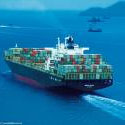| |
|
| |
|
 |
Supply
Chain by the Numbers |
| |
|
| |
- June 28 , 2012
|
| |
|
| |
|
| |
|
| |
Global Energy Use Up, Led by Emerging Markets; FedEx Sees Tepid Economic Growth Ahead; Ocean Container Ships Often Late Pushing Off; Foxconn's Super Factory
|
| |
|
| |
| |
| |

|
2.5% |
Growth in global energy consumption in 2011, according to the just released and as always excellent BP Statistical Review of World Energy for 2012. That figure is around the historical average, but well below the 5.1% rise in 2010 when overall economic growth was stronger. But continuing the recent trend, energy consumption in developed (OECD) countries actually fell .8% last year, while rising 5.3% in developing markets. China by itself accounted for 71% of all energy consumption growth.
|
| |
| |
|
| |
| |
| |
66-70%
|

|
Percent of ocean containers ships that left their first port on schedule in Q1, according to the latest Carrier Performance tracker by the analysts at Drewry Shipping. Obviously, if the first step is delayed, it often leads to other delays along the route and missed arrival times at the destinations. Once departed, Drewry says about 25% of container ships are on the sea longer than planned. Those factors together mean that just in about 57% of sailings does the actual arrival date of the container at the port of discharge meet the promised date. That uncertainty means companies have to carry inventory buffers.
|
| |
| |
| |
|
|
|
| |
 |
 |
| |
|
|
| |